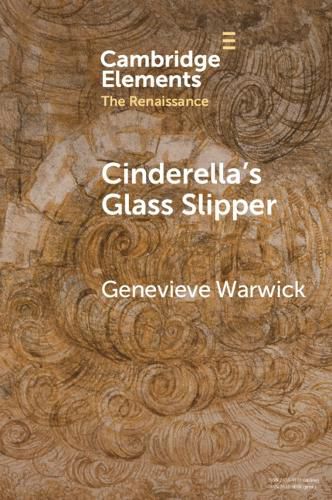Readings Newsletter
Become a Readings Member to make your shopping experience even easier.
Sign in or sign up for free!
You’re not far away from qualifying for FREE standard shipping within Australia
You’ve qualified for FREE standard shipping within Australia
The cart is loading…






Cinderella’s Glass Slipper studies Renaissance material cultures through the literary prism of fairy-tale objects. The literary fairy-tale first arose in Renaissance Venice, originating from oral story-telling traditions that would later become the Arabian Nights, and subsequently in the Parisian salons of Louis XIV. Largely written by, for, and in the name of women, these literary fairy-tales took a lightly comic view of life’s vicissitudes, especially female fortune in marriage. Connecting literary representations of bridal goods - dress, jewellery, carriages, toiletries, banqueting and confectionary foods - to the craft histories of their making, this Element offers a newly-contextualised socio-economic account of Renaissance luxe, from architectural interiors to sartorial fashioning and design. By coupling Renaissance luxury wares with their fairy-tale representation, it locates the recherche materialities of bridal goods - gold, silver, diamonds and silk - within expanding colonialist markets of a newly-global early modern economy in the age of discovery.
$9.00 standard shipping within Australia
FREE standard shipping within Australia for orders over $100.00
Express & International shipping calculated at checkout
Cinderella’s Glass Slipper studies Renaissance material cultures through the literary prism of fairy-tale objects. The literary fairy-tale first arose in Renaissance Venice, originating from oral story-telling traditions that would later become the Arabian Nights, and subsequently in the Parisian salons of Louis XIV. Largely written by, for, and in the name of women, these literary fairy-tales took a lightly comic view of life’s vicissitudes, especially female fortune in marriage. Connecting literary representations of bridal goods - dress, jewellery, carriages, toiletries, banqueting and confectionary foods - to the craft histories of their making, this Element offers a newly-contextualised socio-economic account of Renaissance luxe, from architectural interiors to sartorial fashioning and design. By coupling Renaissance luxury wares with their fairy-tale representation, it locates the recherche materialities of bridal goods - gold, silver, diamonds and silk - within expanding colonialist markets of a newly-global early modern economy in the age of discovery.